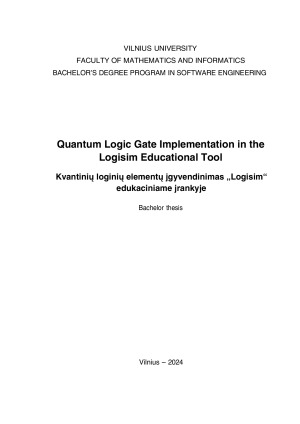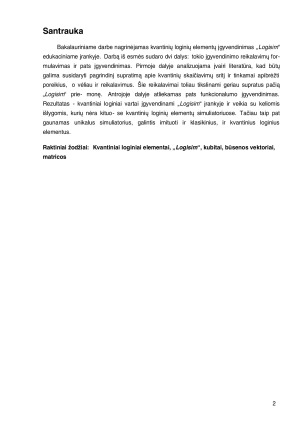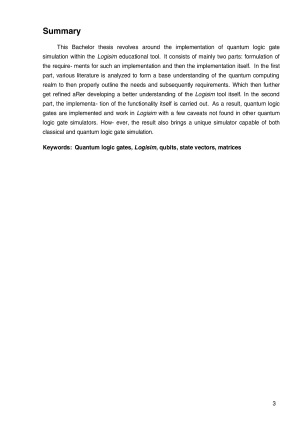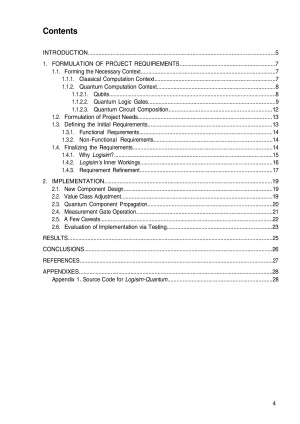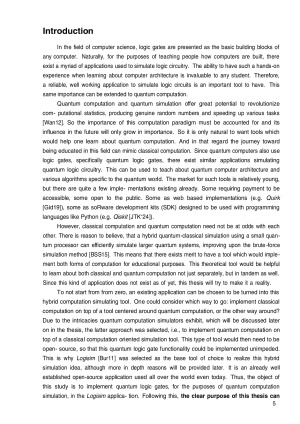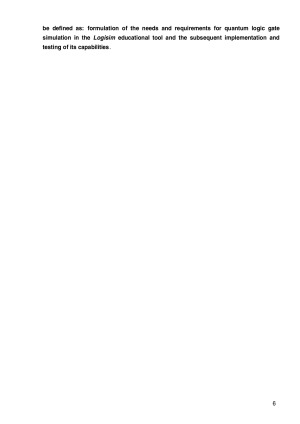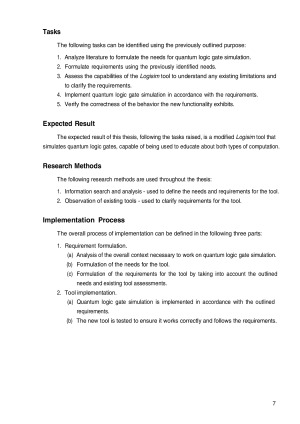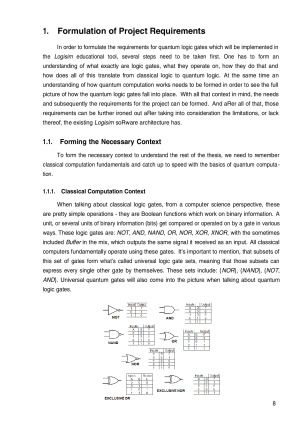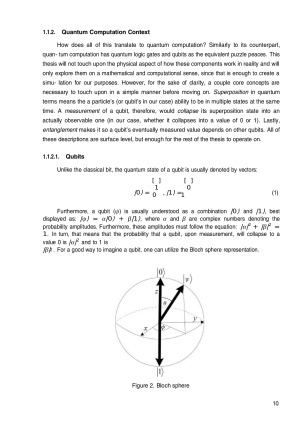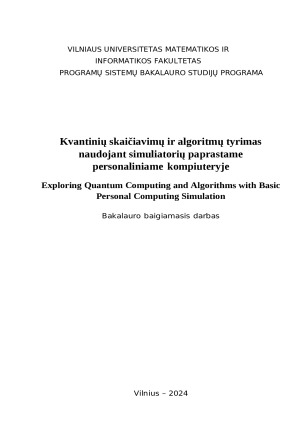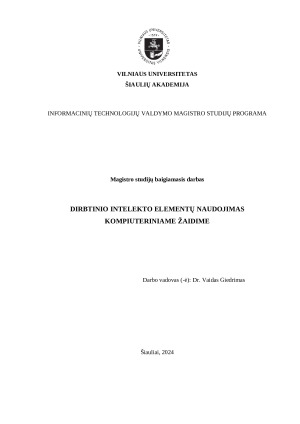Kvantinių loginių elementų jgyvendinimas „Logisim“ edukaciniame jrankyje
Detali informacija
Ištrauka
Kvantinių loginių elementų jgyvendinimas „Logisim“ edukaciniame įrankyje
Contents
INTRODUCTION 5
1.FORMULATION OF PROJECT REQUIREMENTS 7
1.1.Forming the Necessary Context 7
1.1.1.Classical Computation Context 7
1.1.2.Quantum Computation Context 8
1.1.2.1.Qubits 8
1.1.2.2.Quantum Logic Gates 9
1.1.2.3.Quantum Circuit Composition 12
1.2.Formulation of Project Needs 13
1.3.Defining the Initial Requirements 13
1.3.1.Functional Requirements 14
1.3.2.Non-Functional Requirements 14
1.4.Finalizing the Requirements 14
1.4.1.Why Logisim? 15
1.4.2.Logisim’s Inner Workings 16
1.4.3.Requirement Refinement 17
2.IMPLEMENTATION 19
2.1.New Component Design 19
2.2.Value Class Adjustment 19
2.3.Quantum Component Propagation 20
2.4.Measurement Gate Operation 21
2.5.A Few Caveats 22
2.6.Evaluation of Implementation via Testing 23
RESULTS 25
CONCLUSIONS 26
REFERENCES 27
APPENDIXES 28
Appendix 1. Source Code for Logisim-Quantum 28
Introduction
In the field of computer science, logic gates are presented as the basic building blocks of
any computer. Naturally, for the purposes of teaching people how computers are built, there
exist a myriad of applications used to simulate logic circuitry. The ability to have such a hands-on
experience when learning about computer architecture is invaluable to any student. Therefore,
a reliable, well working application to simulate logic circuits is an important tool to have. This
same importance can be extended to quantum computation.
Quantum computation and quantum simulation offer great potential to revolutionize
com- putational statistics, producing genuine random numbers and speeding up various tasks
[Wan12]. So the importance of this computation paradigm must be accounted for and its
influence in the future will only grow in importance. So it is only natural to want tools which
would help one learn about quantum computation. And in that regard the journey toward
being educated in this field can mimic classical computation. Since quantum computers also use
logic gates, specifically quantum logic gates, there exist similar applications simulating
quantum logic circuitry. This can be used to teach about quantum computer architecture and
various algorithms specific to the quantum world. The market for such tools is relatively young,
but there are quite a few imple- mentations existing already. Some requiring payment to be
accessible, some open to the public. Some as web based implementations (e.g. Quirk
[Gid19]), some as soRware development kits (SDK) designed to be used with programming
languages like Python (e.g. Qiskit [JTK+24]).
However, classical computation and quantum computation need not be at odds with each
other. There is reason to believe, that a hybrid quantum-classical simulation using a small quan-
tum processor can efficiently simulate larger quantum systems, improving upon the brute-force
simulation method [BSS15]. This means that there exists merit to have a tool which would imple-
ment both forms of computation for educational purposes. This theoretical tool would be helpful
to learn about both classical and quantum computation not just separately, but in tandem as well.
Since this kind of application does not exist as of yet, this thesis will try to make it a reality.
To not start from from zero, an existing application can be chosen to be turned into this
hybrid computation simulating tool. One could consider which way to go: implement classical
computation on top of a tool centered around quantum computation, or the other way around?
Due to the intricacies quantum computation simulators exhibit, which will be discussed later
on in the thesis, the latter approach was selected, i.e., to implement quantum computation on
top of a classical computation oriented simulation tool. This type of tool would then need to be
open- source, so that...
Mūsų mokslo darbų bazėje yra daugybė įvairių mokslo darbų, todėl tikrai atrasi sau tinkamą!
